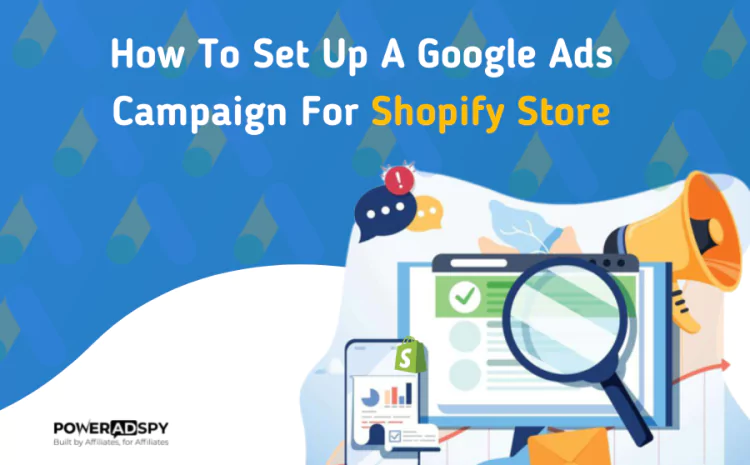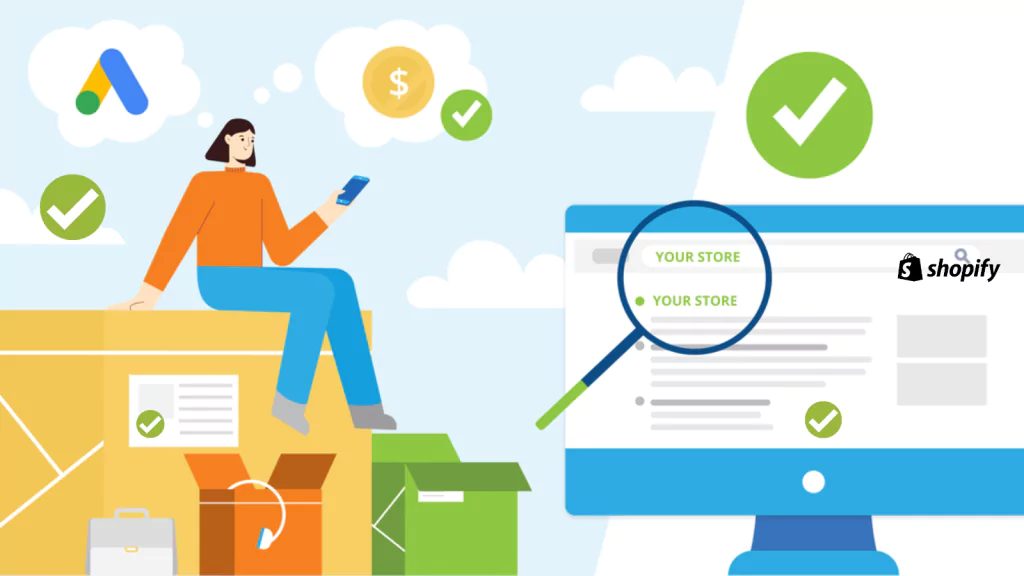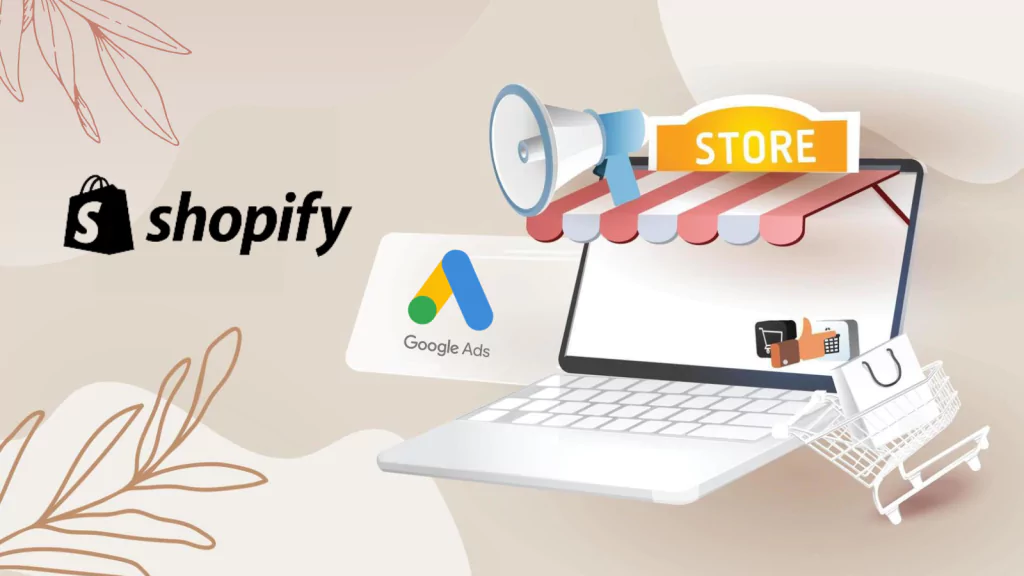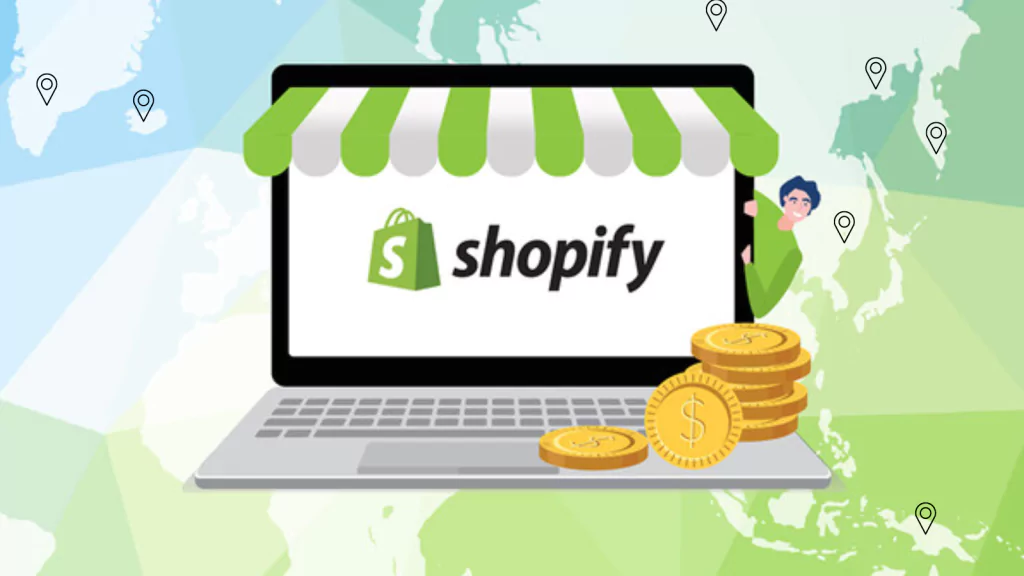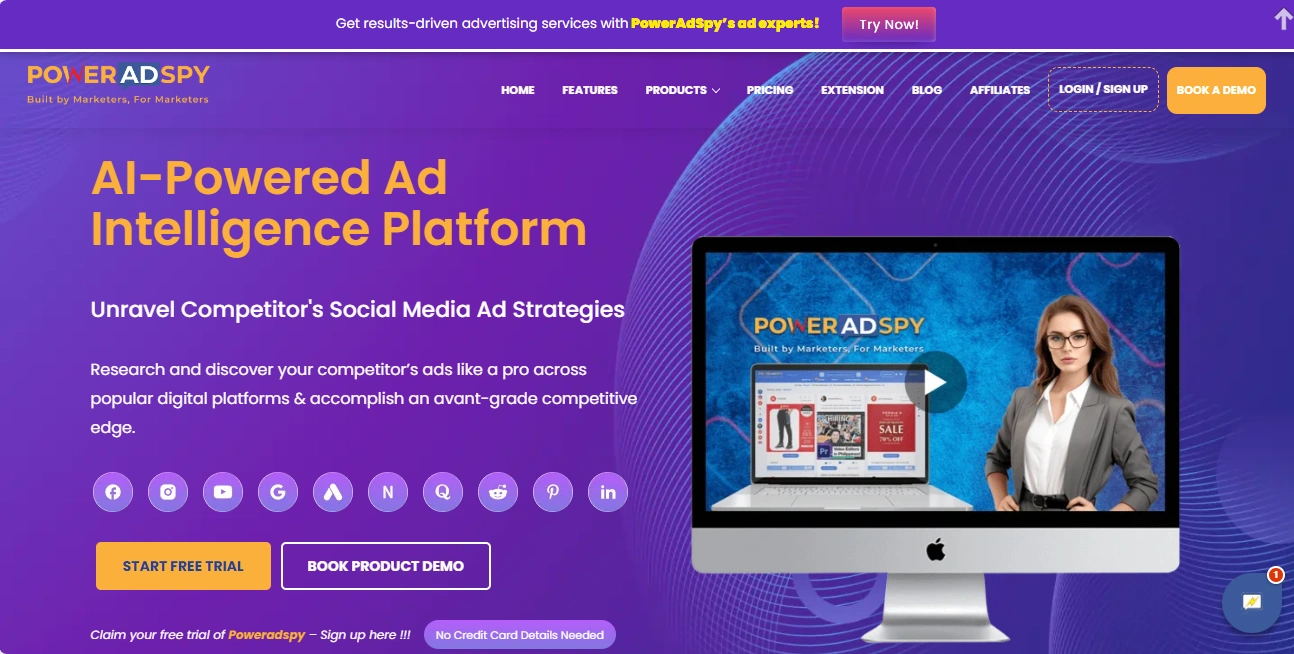How to Set Up a Google Ads Campaign for Shopify Store
Google Ads is one of the most powerful and widely used advertising platforms, and it can be an incredibly effective way to drive traffic and sales for your Shopify store. However, setting up a Shopify Google Ads campaign can be a difficult task, especially if you’re new to digital advertising.
In this guide, we will walk you through the process of setting up a successful Google Ads campaign for your Shopify store. We will cover everything from choosing the right campaign type to defining your campaign goals and KPIs, conducting keyword research, creating effective ad groups, and setting up conversion tracking and analytics.
Creating and optimizing landing pages, determining your budget and bid strategy, creating and uploading product feeds for a Google Shopping campaign, defining your audience targeting and geographic targeting, and integrating your Google Ads e-commerce with other marketing channels and automation tools.
By the end of this guide, you will have a solid understanding of how to set up a Google Ads campaign that is tailored to your Shopify store’s unique needs and goals. Whether you’re looking to drive traffic, increase sales, or build brand awareness, eCommerce Google Ads can help you achieve your marketing objectives and reach new customers.
Here The Blog-
Need To Advertise Shopify Store on Google Ads?
As an eCommerce business owner, advertising your Shopify Google Ads e-commerce can be a crucial step in driving traffic and increasing sales. Google Ads allows you to place your ads in front of people who are actively searching for the products or services offered, making it a highly targeted and effective advertising platform.
By leveraging the power of Shopify Google Ads, you can get your Shopify store in front of potential customers to generate more qualified leads, increase conversions, and ultimately grow your business. With the right strategy, Google Ads can be a valuable tool for any Shopify store owner looking to boost their online presence and drive revenue.
Link your Google and Shopify Accounts:
Linking your Google and Shopify accounts is a crucial step in running effective Google Ads campaigns for your Shopify store. By linking these two accounts, you can easily track conversions and measure the performance of your Google Ads campaigns, you can also use Google’s automated bidding and targeting features to optimize your ad spending and reach the right audience.
To link your Google and Shopify accounts, you need to have a Shopify Google Ads account set up. Once you’ve done that, you can link your Shopify store to your e-commerce Google Ads account by going to the “Linked accounts” section of your Google Ads account and clicking “Shopify.” From there, you’ll need to log in to your Shopify account and follow the prompts to link the two accounts.
Once your accounts are linked, you’ll see vital data about your Shopify store’s performance in your Google shopping ads Shopify account, including information on your sales, revenue, and conversion rates. This data can help you make informed decisions about your Google Ads campaigns and ensure the most out of your advertising budget.
Defining Your Audience Targeting And Geographic Targeting For Your Campaign:
When it comes to an effective Shopify Google ads campaign, one of the most important considerations is identifying your audience and targeting them effectively. By defining your audience, you can tailor your messaging and approach to reach the people most likely to engage with your brand or product. In addition, targeting can help ensure that your message reaches the right people.
To define your audience, start by analyzing your existing customer base and identifying demographics such as age, gender, income level, education, and interests. You can also conduct market research to understand the needs and preferences of your potential customers.
Once you understand your audience, you can use this information to develop targeted messaging and choose the marketing channels to reach them. For example, if your target audience is young adults, you may want to focus on social media channels like Instagram and Snapchat.
Involve focusing your marketing efforts on specific regions or areas. It can be important for businesses with a physical presence, such as retail stores or restaurants. By targeting, you can increase foot traffic and drive sales.
To determine the best geographic targets for Shopify Google Ads campaigns, consider factors such as population density, local competition, and demographic makeup. You may also want to use location-based advertising tools to ensure that your message is reaching the right people in the right place.
Overall, defining your audience and geographic targeting are critical components of any successful Google shopping Ads for an e-commerce campaign. By taking the time to understand your customers and focus your efforts on the regions, you can increase the effectiveness of your messaging and drive real results for your business.
Use Google Ads Spy Tool to Drive Traffic to Your Shopify Store:
There are Google Ads spy tools available for you to research and analyze your competitors’ ad campaigns. By identifying their keywords and strategies, you can gain insights to optimize your ad campaigns and drive traffic to your Shopify store.
PowerAdSpy is a popular Shopify Google Ads spy tool used by e-commerce businesses to research their competitors’ ad campaigns. With PowerAdSpy, you can track and analyze your competitors’ ad copies, targeting, and strategies across multiple platforms, including Facebook, Instagram, and YouTube. The tool provides insights into the ad performance of your competitors, such as the number of impressions, engagement, and conversion rates.
This information can help you optimize your ad campaigns by identifying winning strategies and uncovering gaps in your competitors’ advertising efforts. PowerAdSpy’s e-commerce-focused features, including product search and filtering by product categories, make it a valuable tool for driving traffic to your Shopify store.
Set Up Conversion Tracking And Analytics For Your Shopify Store:
Setting up conversion tracking and analytics is an essential step in running successful Shopify Google Ads for e-commerce campaigns for your Shopify store. By tracking conversions, you can determine which ads and keywords divided the most sales and revenue for your business, and you can use this data to optimize your campaigns and get the best possible return on your ad spend.
To set up conversion tracking for your Shopify store, you first need to create a conversion action in your Google Ads account. It could be a purchase, sign-up, or any other action you want to track as a conversion. Once you’ve created the conversion action, you can then add the conversion tracking code to your Shopify store’s checkout page to track when a conversion occurs.
In addition to conversion tracking, it’s essential to set up analytics for your Shopify store. It can help you better understand how people interact with your website and where they are coming from. Google Analytics is a powerful tool that can provide valuable insights into your website’s traffic, user behavior, and conversion rates.
By setting up conversion tracking and analytics for your Shopify store, you can gain valuable insights into your customers’ behavior and optimize your Google Ads for e-commerce campaigns for better performance. With the data and insights, you can make informed decisions about your digital advertising strategy and ensure the most out of your advertising budget.
Read Blogs:
How To Use Google Ads For Shopify: Things You Must Know
How Shopify Ads Quickly Helps You Improve Your Business?
How To Use YouTube Ads To Boost Your Shopify Sales?
At Last, Never Stop Optimizing Your Ad Campaigns:
Setting up a Shopify Google Ads campaign for your store can be a great way to drive traffic and increase sales. With the targeting, ad copy, and budget, you can reach your target audience and see a significant return on your investment. Follow these steps to set up your Google Ads campaign and start seeing the results for yourself.

